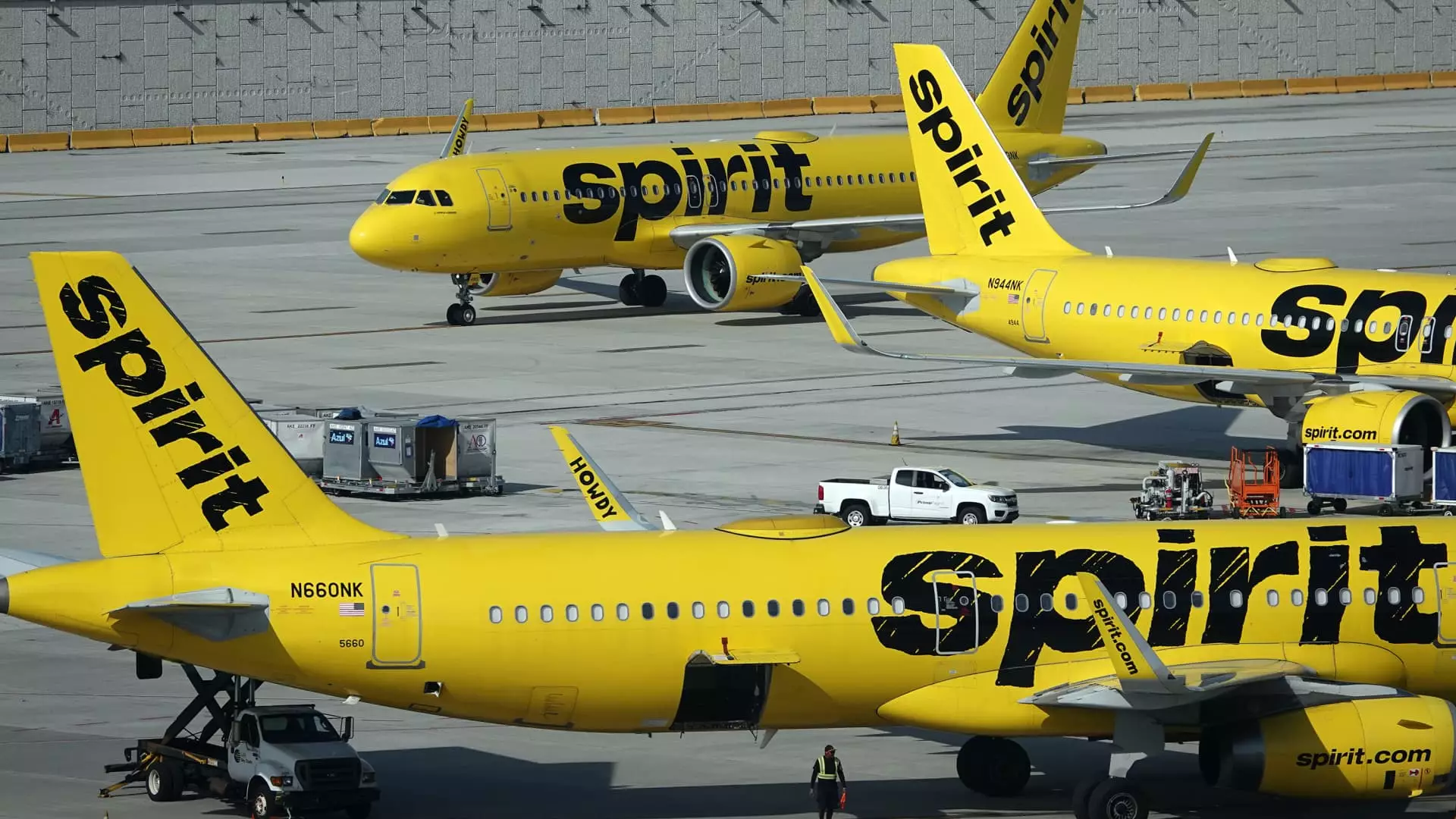Spirit Airlines has recently announced significant restructuring efforts aimed at mitigating its financial woes amid a turbulent aviation landscape. In a bold move, the airline plans to cut jobs and divest from its older Airbus fleet, specifically targeting 23 aircraft for sale. This strategy, outlined in a securities filing, is projected to raise approximately $519 million—an injection of cash that the struggling carrier urgently needs to stabilize its operations. In addition to asset sales, Spirit aims to achieve approximately $80 million in cost savings primarily through workforce reductions.
These measures come as part of Spirit’s broader strategy to navigate the post-pandemic recovery, during which the company has grappled with a shifting travel demand and operational challenges, including grounding of Pratt & Whitney-powered planes. The complexity of the situation is further exacerbated by the airline’s ongoing struggles to refinance over $1 billion in debt, a deadline that has now been pushed to late December. This extension, while providing temporary relief, underscores the urgency with which Spirit must act to restore financial health.
The airline industry has undergone drastic changes since the pandemic, with travelers’ preferences evolving and operational costs soaring. Spirit, which caters primarily to budget-conscious travelers, has been particularly vulnerable to these market dynamics. Despite a temporary rise in its stock price following the recent announcements, shares of Spirit Airlines remain over 80% lower than at the beginning of the year, largely due to the dismantling of its planned acquisition by JetBlue Airways—a development that has raised serious concerns about its future trajectory.
Moreover, while Spirit has taken steps to manage its workforce, such as furloughing around 200 pilots in September, uncertainties loom for ancillary staff members. Flight attendants appear to be in a relatively secure position due in part to voluntary leaves of absence, but the overall outlook for employees remains grim, as the company prepares for a significant reduction in capacity. The forecasted drop in capacity for 2025 indicates a strategic contraction that reflects the realities of the current airline market.
Amidst these challenges, there are whispers of renewed merger discussions between Spirit Airlines and Frontier Airlines, reviving hopes for a potential strategic partnership. Both carriers had previously attempted a merger, which was ultimately derailed by JetBlue’s aggressive acquisition offer. While no official comments have been made regarding the speculative merger, the possibility of collaboration could offer Spirit a much-needed lifeline as it seeks to navigate the complexities of the aviation sector.
As Spirit Airlines confronts impending financial strain and a bleak operating margin forecast of -24.5% for the third quarter, the airline’s prospects remain uncertain. The company’s efforts to cut costs, streamline operations, and explore potential partnerships will be crucial in determining whether it can emerge from this turbulent phase. The path forward is fraught with challenges, but the actions taken now may ultimately chart the course for Spirit’s survival in the increasingly competitive airline industry.


Leave a Reply